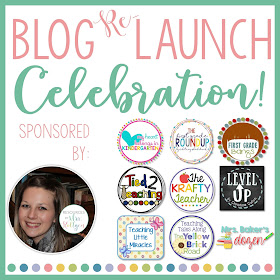Hey there! I'm so glad you are joining me and some of my blogging friends for The Reading Strategies Book study!
Before I start discussing the "Getting Started" section, I wanted to take a minute to share a couple of goodies that might interest you.
The Heinemann website has lots of goodies on their site about the book, including a study guide.
There is a Facebook group dedicated to the book!
If you still need to get your copy, Amazon might have the best deal.
Here is the schedule for our study:
Now that we have all that out of the way, I want to jump right into the "Getting Started" section of the book. You'll find a few questions along the way that you can answer in the comments! :-)
I'm actually going to start with the last page of the "Getting Started" section (pg. 19) and share my absolute favorite quote.
This just speaks to my teacher heart!
What is your favorite quote from the "Getting Started" section?
Goals
Aside from knowing Serravallo shares an important part of my teaching philosophy, I love how she organized the book into goals. Conferencing and setting goals with my students has always been my absolute favorite part of teaching, but it has also always been a challenge to fit it into my day. I used the Daily 5 structure in my classroom. Most of my one-on-one conferences were on Fridays (when I would not have Time with Teacher) or during morning tub time as kids trickled in from breakfast. That is one thing I am excited about for my new position as a reading specialist--more time to work one-on-one and with small groups!
How do you fit in time for conferencing and/or goal-setting?
This last year I incorporated Data Binders (PSA - If you're looking for a resource to use for data binders, check out this FREE, editable version from The Curriculum Corner) for the first time, and I loved it! My students each had a binder and tracked data for a variety of things. It made prepping for parent teacher conferences a snap too. I would have liked to use the goal section more effectively, and I think reading this book will certainly help me with that.
Here's some of my favorite quotes about goals from the book:
"...goals coupled with teacher feedback make one of the biggest differences on student achievement and progress." (pg. 2)
"...make sure you are matching the right goal to the right reader." (pg. 2)
"...work to understand each student in your class well enough to be able to articulate a goal for him or her." (pg. 5)
"...when the goal can come from the student, the student will be all the more motivated to work on it." (pg. 5) YES! YES! YES!
Strategies
Serravallo defines strategies as the deliberate, effortful, intentional, and purposeful actions a reader takes to accomplish a specific task or skill. She continues to explain that our goal should be for our readers to outgrow the strategies! In other words, as a student masters a strategy, it will become automatic and resurface when he or she needs it. YES!
"The strategy is a temporary scaffold, and like any scaffolding it needs to be removed." (pg. 9)
"...introduce one strategy at a time, guide the student in practicing the strategy, and move on to a new strategy when the student appears to be secure with the first one." (pg. 9)
Give an example of a temporary scaffold you already use in your classroom (any subject) and tell us how you make sure it is temporary.
Visuals
The examples of all the visuals were amazing--and they are all throughout the book! I really like the idea of creating a visual reminder for each reader so they are reminded of what they are working on (especially liked Lilli's Reading Goals on pg. 8).
Check out these characteristics of a helpful chart or tool:
--clear and as simple as possible
--low on text
--have icons, pictures, and/or color-coding
--appropriate for the age and readability level of the students
--clear headings
Prompts and Feedback
I definitely need to work on this area. After reading this section, I can see that I am sometimes way too wordy which means I am doing most of the work!
"...try to phrase my prompts in as few words as possible." (pg. 11)
"...gentle nudges, to encourage the child to do the thinking, talking, jotting, and working through the strategy with me as a guide." (pg. 11)
That sums up my thoughts of the "Getting Started" section. I'm excited to dig into the first and second goals and strategies next week. We will be choosing two or three favorite strategies from each goal and sharing how we use or will use them in our classroom.
No blog? No problem. You can still share your favorites and ideas on how to use them in the comments section. :-)
I can't wait to read everyone's great ideas!
To join in the discussion this week, answer these questions in the comments below (and/or simply share your thoughts on the "Getting Started" section):
What is your favorite quote from the "Getting Started" section?
How do you fit in time for conferencing and/or goal-setting?
Give an example of a temporary scaffold you already use in your classroom (any subject) and tell us how you make sure it is temporary.
Now continue the study by hopping along to visit the other blogger's posts to see what they have to say!
P.S. I posted early this week to make sure the link up was working properly. The remaining weeks really will be on Fridays (see dates listed on the schedule).

























